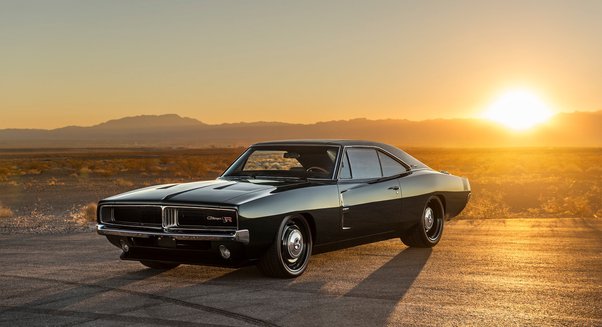
You must pay close attention to the year that the Lincoln Continental you are looking at is manufactured. The old model of the Continental was discontinued in 1993, but was brought back for the 1980s. The Lincoln Continental was made to compete with both the Cadillac Seville (and the Imperial). The styling of this model made it stand out from the Ford Granada as well as the Mercury Cougar. The platform of the model shared similarities with the Ford Fox and Mercury Cougar as well as the Granada. The Continental also shared its wheelbase with the new Continental Mark VII. This model was introduced with the 1984 model-year.
Model year 1993
Four recalls have been issued to the Lincoln Continental in the 29-year history of the model. The 1993 model was no exception with 4 recalled automobiles. Here's a look inside each of these vehicles. The 1993 Lincoln Continental features many distinctive features. A new center console, with floor shifter, has a center armrest, and cup holder are just a few of the changes. The interior is spacious as well as its trunk.
Model year 1994
The fourth-generation Lincoln Continental came in three body options: the Sedan, Convertible and the Wagon. It was the first four-door convertible built after World War II and featured a power-operated retractable hardtop. Retractable "breezeway" rear windows were also available on the Continental. This feature was introduced in the Mercury Turnpike Cruiser back in 1957. The same styling principles were followed by the second generation Continental, which featured frameless door glass.
Model year 1995
The price base for the 1995 Lincoln Continental started at $40,750. This was increased to $74,500 in July 2002 when production ceased. The Continental was also given some improvements, including an improved suspension system, adjustable steering effort, seat-mounted airbags, and a more refined suspension. A split-bench front seat was added to the sedan, as well as a power sunroof. The 1995 model, although no longer in production, is still available for sale.

Model year 1996
Lincoln Continental's tenth century introduced a new frontend design theme. Standard equipment included a door lock with an electrically latched handle. A button was located near the door pull handle to unlock the door. The exterior door pulls were integrated in the beltline window trim. This design is reminiscent of the third generation Ford Thunderbird. These changes were accompanied in part by a new, more comfortable sitting position.
Model year 1997
The 1997 Lincoln Continental was one of the last models produced by Lincoln. This was a high-end luxury vehicle that ranked highly in the luxury segment. It was sold by its second owner after only 13,000 miles. This luxury car has been in use for 16 years. Minor repairs were required to maintain its good condition. The transmission and levelers were replaced at 50,000 and 93,000 miles, respectively. The interior was comfortable and luxurious, with many amenities. The suspension was also adjustable for comfort, control and stability.
Model year 1998
The 1998 Lincoln Continental interior is a significant improvement on the previous model. The interior features new trim such as bird's-eye maple and textured suede. The cabin is larger than the previous model and has a smaller back seat. However, it has fewer interior space than the Seville. The 1998 Lincoln Continental, despite its new exterior design is an excellent value for money.
1999 model year
Comparing the 1999 Lincoln Continental model with its predecessor, Chrysler Town Car, you will see that the Lincoln Continental is just 5 inches wider and 7 inches shorter. It has a better engine. The DOHC engine in the Continental's 4.6L V-8, on the other hand, is available in Town Car's SOC or single overhead cams. This has resulted in a rise in horsepower from 260 to 265 horsepower at 5,750 rpm.
Model year 2000
The new V8 engine in the Lincoln Continental is one of the biggest changes since the last generation of this luxury sedan. This engine has more power that the previous generation. It is also more agile, faster, and comes with more electronic gadgetry. It can match the acceleration of a Cadillac Seville SLS and still get 16.3 mpg. The Lincoln Continental was also equipped with the latest electronic suspension, but it fails to impress fully. Normal mode provides the most effective suspension.

Model year 2002
The Lincoln Continental model year 2002 is largely the same. A new exterior color is available, as is a Vehicle Communication System (VCS), which includes a portable digital-to-analog phone. The new model year features a power-moonroof as well as a six disc changer. The cabin can accommodate up to six people and is spacious. The Lincoln Continental's warranty remains at four years/50,000 miles.
Year 2003
The Lincoln Continental was 2003's last car in Continental's line. The Lincoln Continental's success is not just due to its style. The interior design was inspired by the 1961 Continental. It featured retro-looking gauges, as well hidden infotainment options. It was also one of the most luxurious cars in the segment. The interior was the best of any Lincoln model.
FAQ
Is it worthwhile to become a mechanic?
The answer to that question depends on what your life purpose is. If you're looking for money, then it's true. But, if there are meaning and purpose in your life, then it's not.
If you don't have any mechanics skills, then there's no point getting into it because you'll just end up wasting time. It's not going to make you rich. You won't become famous. You won't be famous.
You'd need to spend years learning how everything works. Then you'd still have to pay someone else to fix your car when it breaks down. Most people avoid doing this. They find something they enjoy instead.
In conclusion, if money is your main goal, you should go ahead. If you are looking for a fulfilling life, however, then stay clear of the mechanics' industry.
How do I fix my vehicle as a hobby?
Take up a hobby in car repair if you have an interest. It is possible to learn about cars, repair them, purchase parts, or simply enjoy them. It's a fun hobby that you can do if it interests you.
It isn't easy to turn it into a full time job. It takes dedication and hardwork. You'll also need to invest a lot.
It is best to avoid getting involved in car accidents unless you have good reasons.
Is being a mechanic apprentice hard?
It's not easy, but you learn fast, and there are many opportunities for advancement.
You must have patience and perseverance. Also, you must know how to fix trucks, cars, and motorcycles.
Customers and loved ones can place a lot of pressure on you. However, you shouldn't be forced to make difficult decisions.
This is a career that you might enjoy if you are passionate about fixing cars. You can make a decent living and build your business.
Perhaps you prefer a different route. Consider becoming a technician.
This requires you to use your technical expertise in support of other workers. You could help technicians troubleshoot problems or teach them new techniques.
Another option is to become a service advisor. When customers bring their cars into a garage, they will receive advice and assistance.
It all depends on your goals. There are many choices available and you can choose what suits you best.
Statistics
- According to the BLS, the median annual salary for automotive service technicians and mechanics in the United States was $44,050 in May 2020. (uti.edu)
- Apprentice mechanics earn significantly less hourly than mechanics who have completed training, with a median wage of approximately $14.50 an hour, according to PayScale. (jobhero.com)
- 52% of Mechanics in the United States think their salaries are enough for the cost of living in their area. (indeed.com)
External Links
How To
How to be an Automotive Technician
An automotive technician performs repairs and maintains vehicles. He/she is employed at automobile dealerships, garages, service centres, and auto shops. He/she repairs cars, trucks, motorbikes and snowmobiles for customers. An automotive technician must be capable of diagnosing problems and making repairs safely, accurately and efficiently.
A person who wants to work as an automotive technician should first obtain an associate degree from a vocational school. After completing this program, he/she must pass the National Institute for Automotive Service Excellence (ASE) certification exam. ASE stands for American Society of Mechanical Engineers. There are two sections to the ASE certification test. The first section tests the ability to use mechanical knowledge. The second section tests the ability to apply practical skills. You must attend one of the authorized testing sites to take the test. These testing sites can be found online and through your local dealer.
After passing the test, a candidate must pass an examination in order to be licensed as an automotive technician. This process varies depending on where the applicant lives. Some states require that candidates attend training courses, while others permit them to learn independently. Some states require technicians to be licensed immediately upon receiving their license. Other states wait until they have been employed as automotive technicians for at least six month.
To become an automotive technician, one must apply at a local dealership. Most employees who are hired start as apprentices. Apprenticeships typically last three years. This is when a student can learn how to do basic repairs such as changing oil, adjusting brakes and replacing tires. Some students learn how to do advanced repairs, such as installing air filters, replacing shocks, repairing engines, and replacing transmission fluids. Many schools offer classes during normal business hours. However, some schools offer evening classes if needed.
Once a student completes his/her apprenticeship, he/she becomes a journeyman. Journeymen can spend up to five years learning how major systems work, including transmissions, differentials. They also learn how to adjust steering gear and suspensions. They also learn to perform complex repairs, such as remanufacturing engines, rebuilding transmissions, and troubleshooting electrical components. Many employers prefer to hire Journeymen because they understand the job well.
Once a candidate passes the required exams and is granted a license, they might consider opening their own shop. According to Bureau of Labor Statistics (2010), almost 1.7million automotive mechanic jobs were on the market. This number was expected increase 18% between 2009 - 2020. If a candidate decides to open his/her own shop, he/she should prepare to invest many thousands of dollars in equipment and supplies.
There are many factors that affect the salary of an automotive technician, such as where they live, their education and experience. On average, a jobless person could expect to earn $20,000 annually. An individual with a high school diploma can earn about $21,000 per annum. An associate's degree earns approximately $24,000 annually. Technicians with bachelor's degrees earned about $27,000 per year. The average annual salary for those with master's degrees was $32,000. Salaries are increasing so that a professional earning less than $30,000 could expect to make $40,000 in a few years.